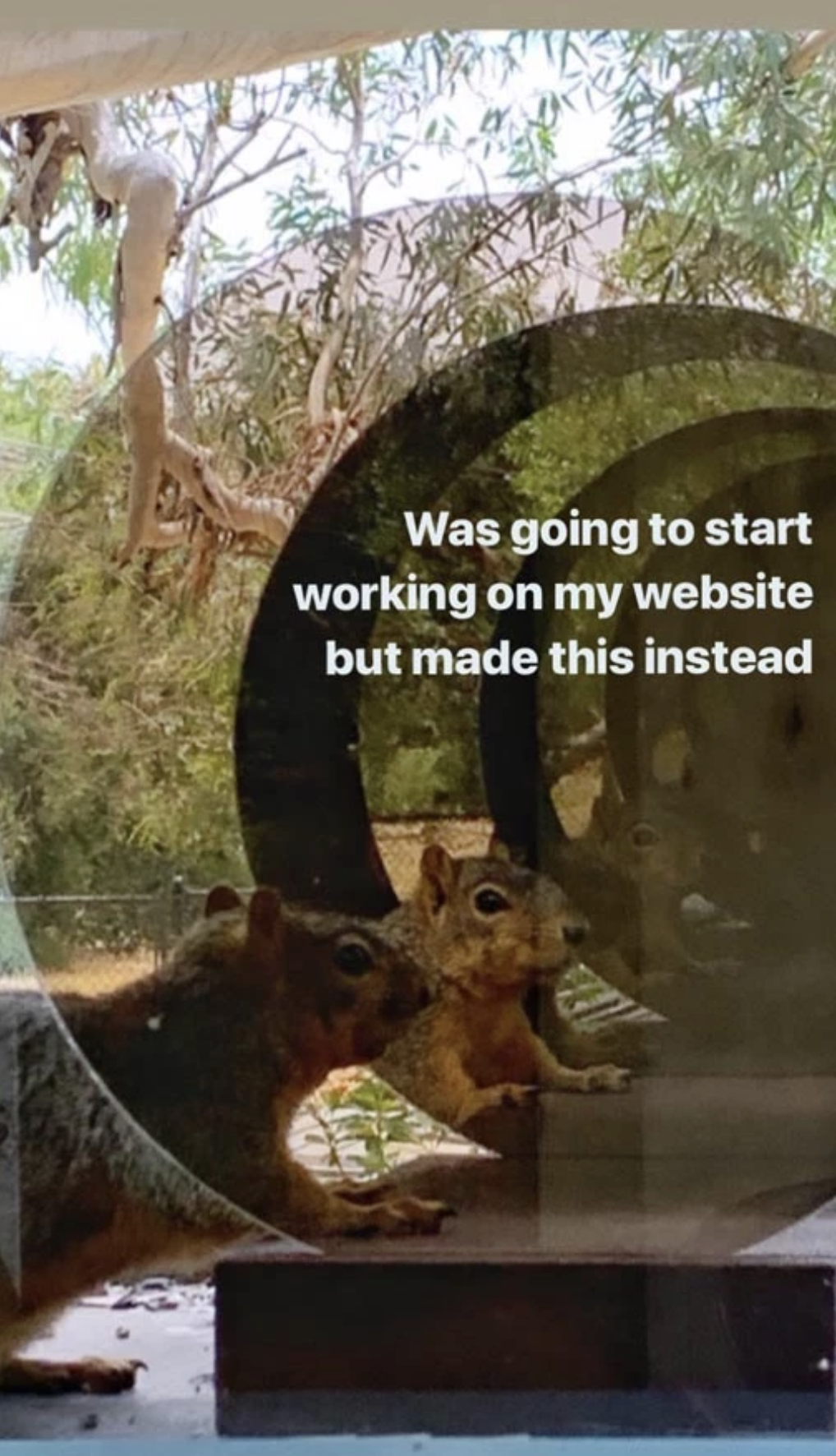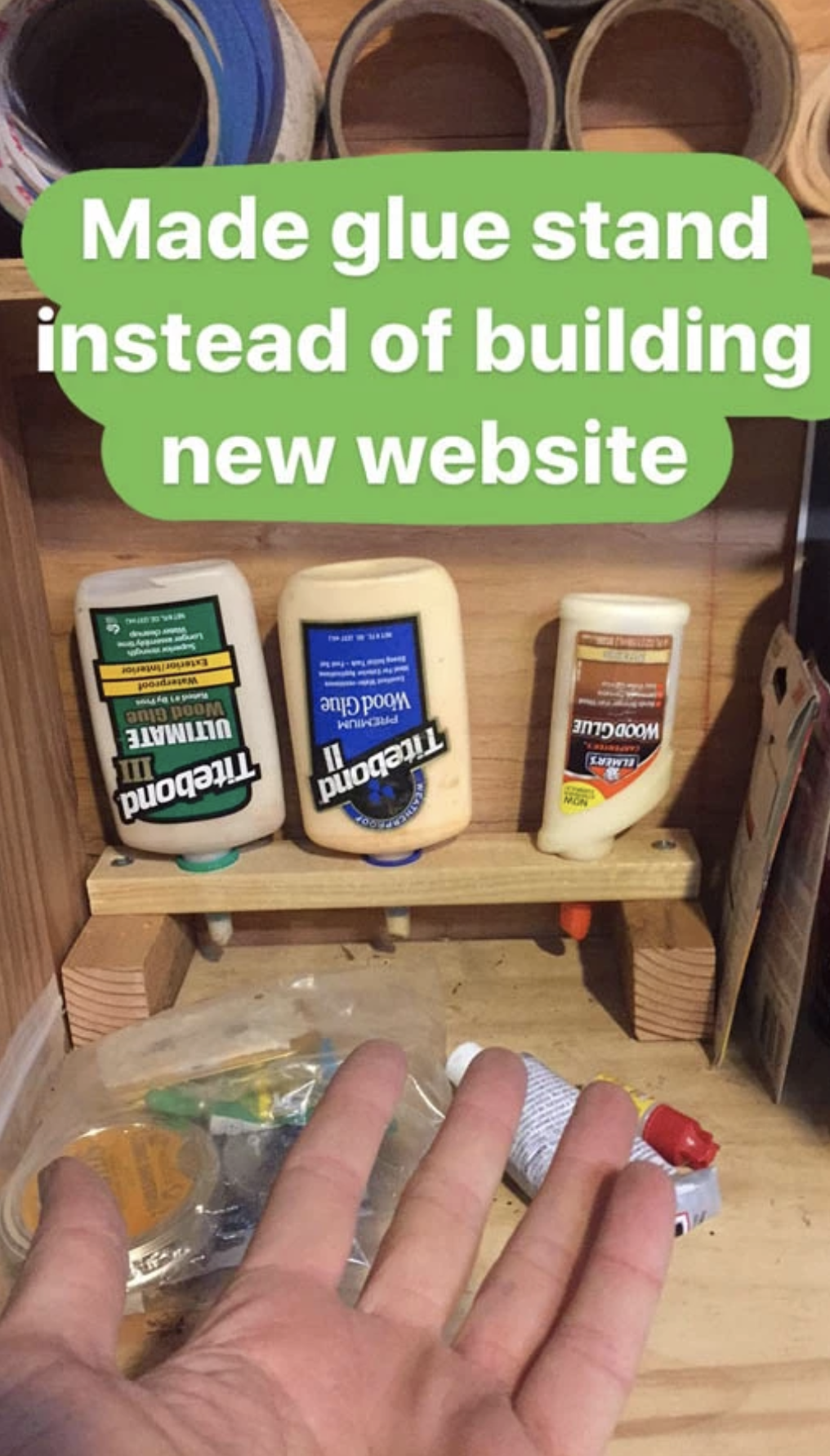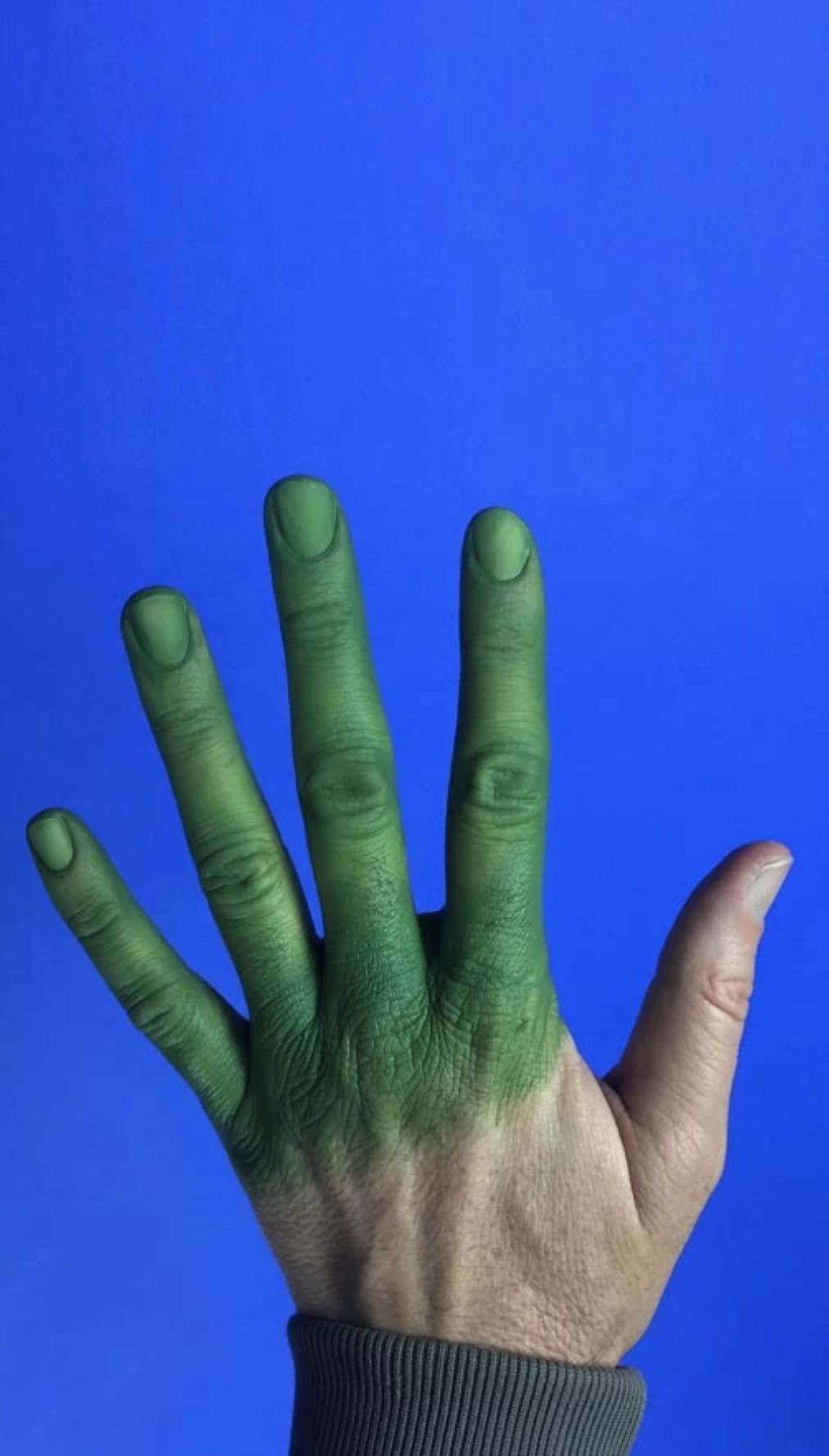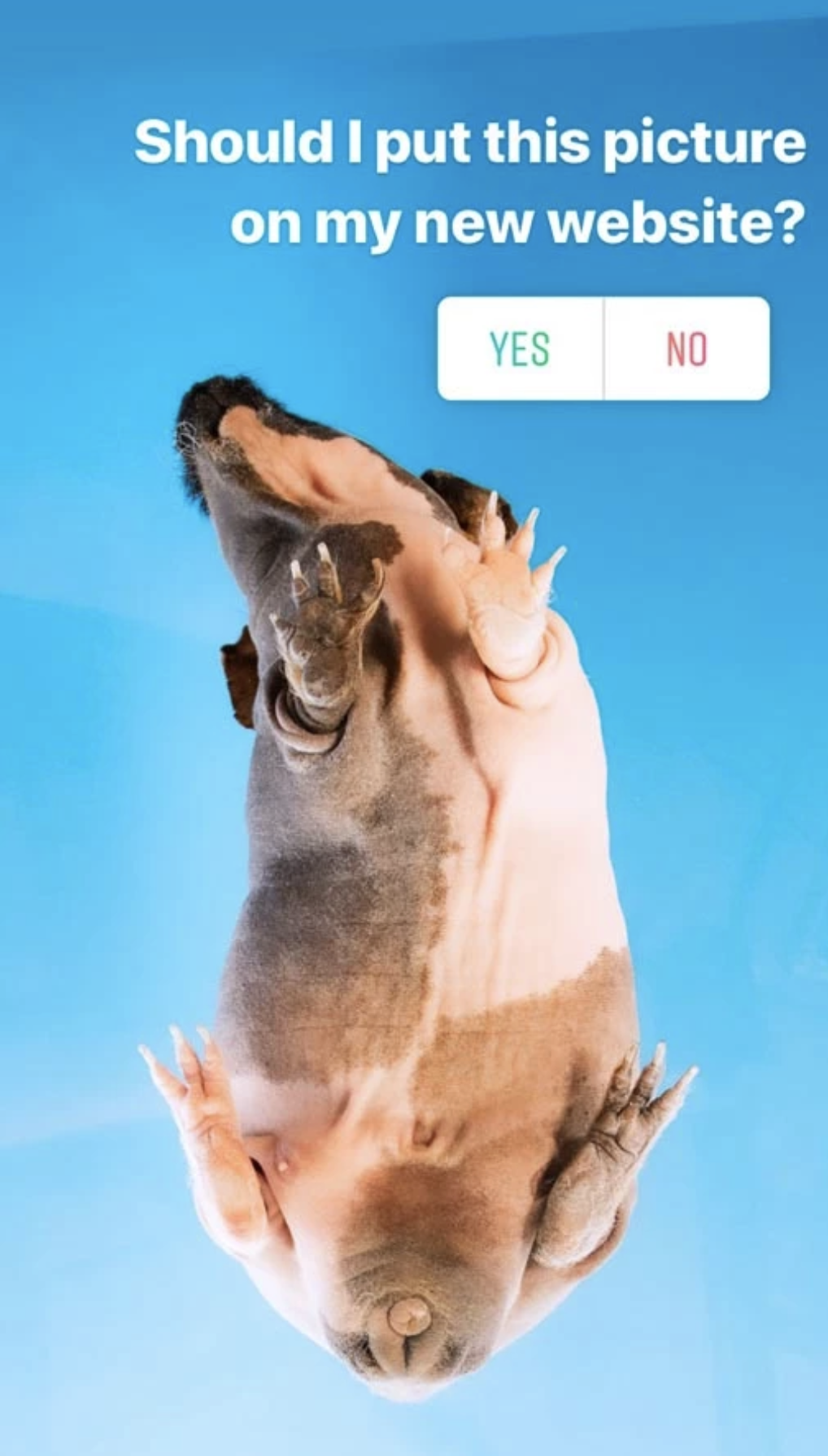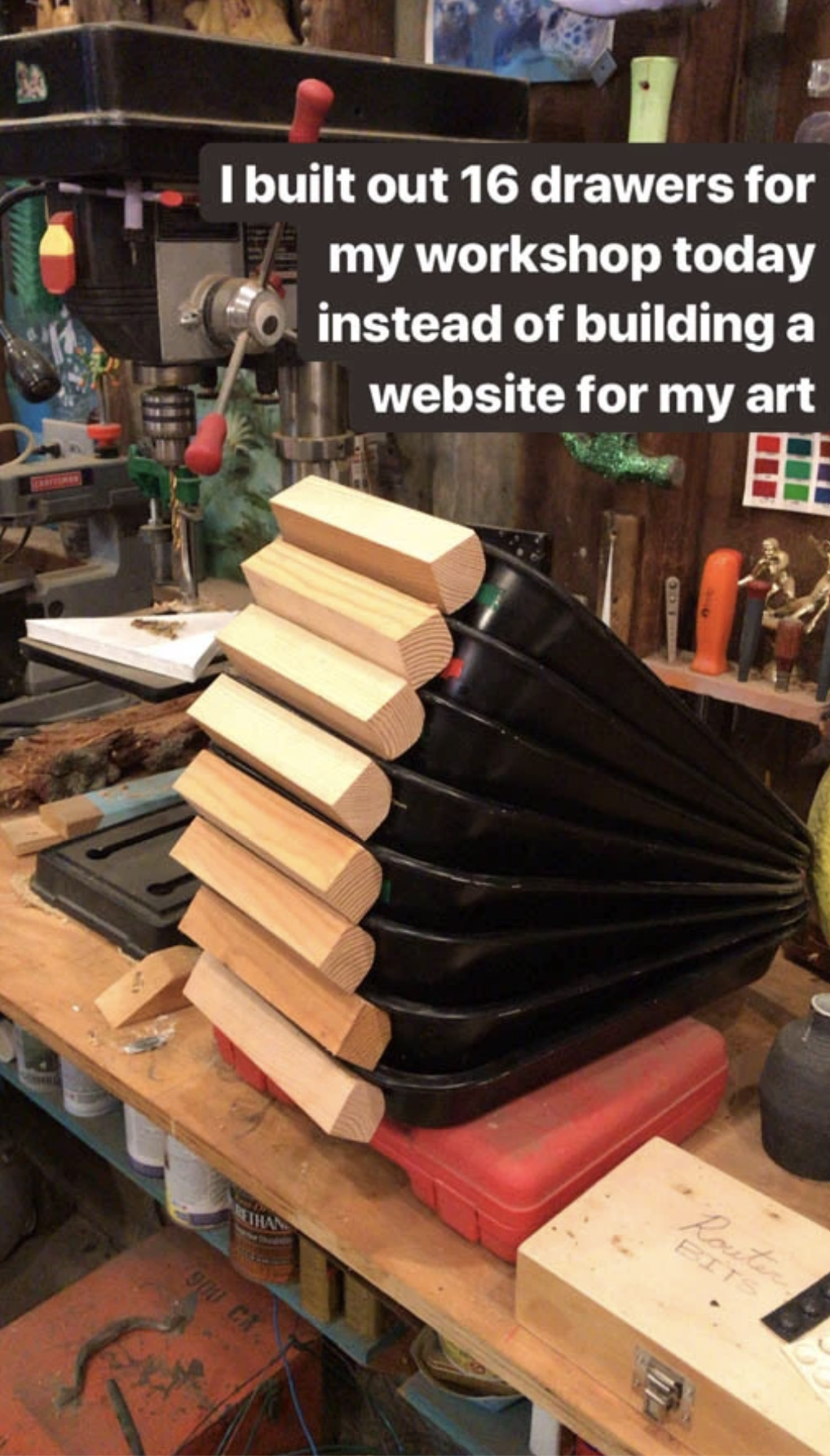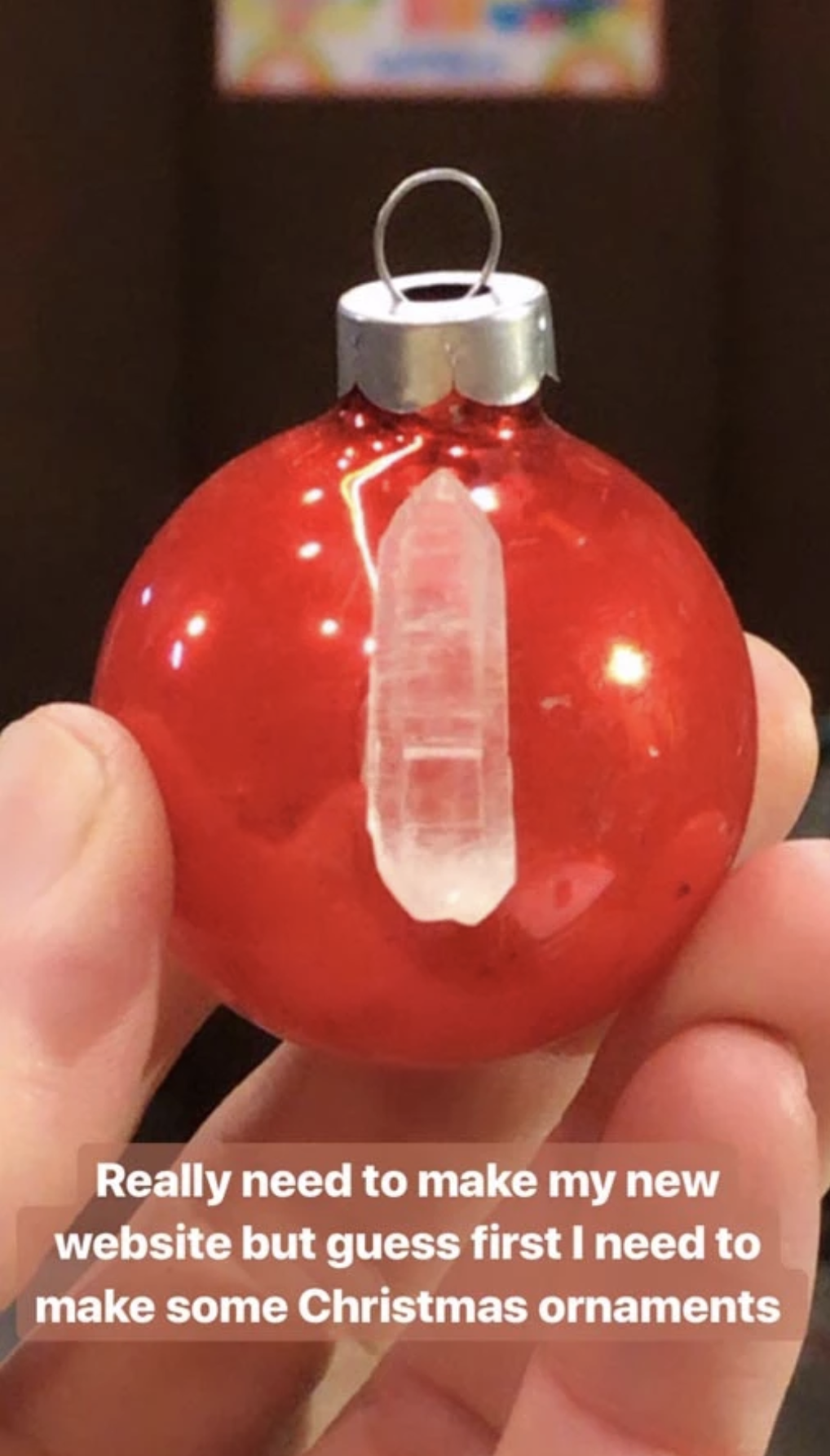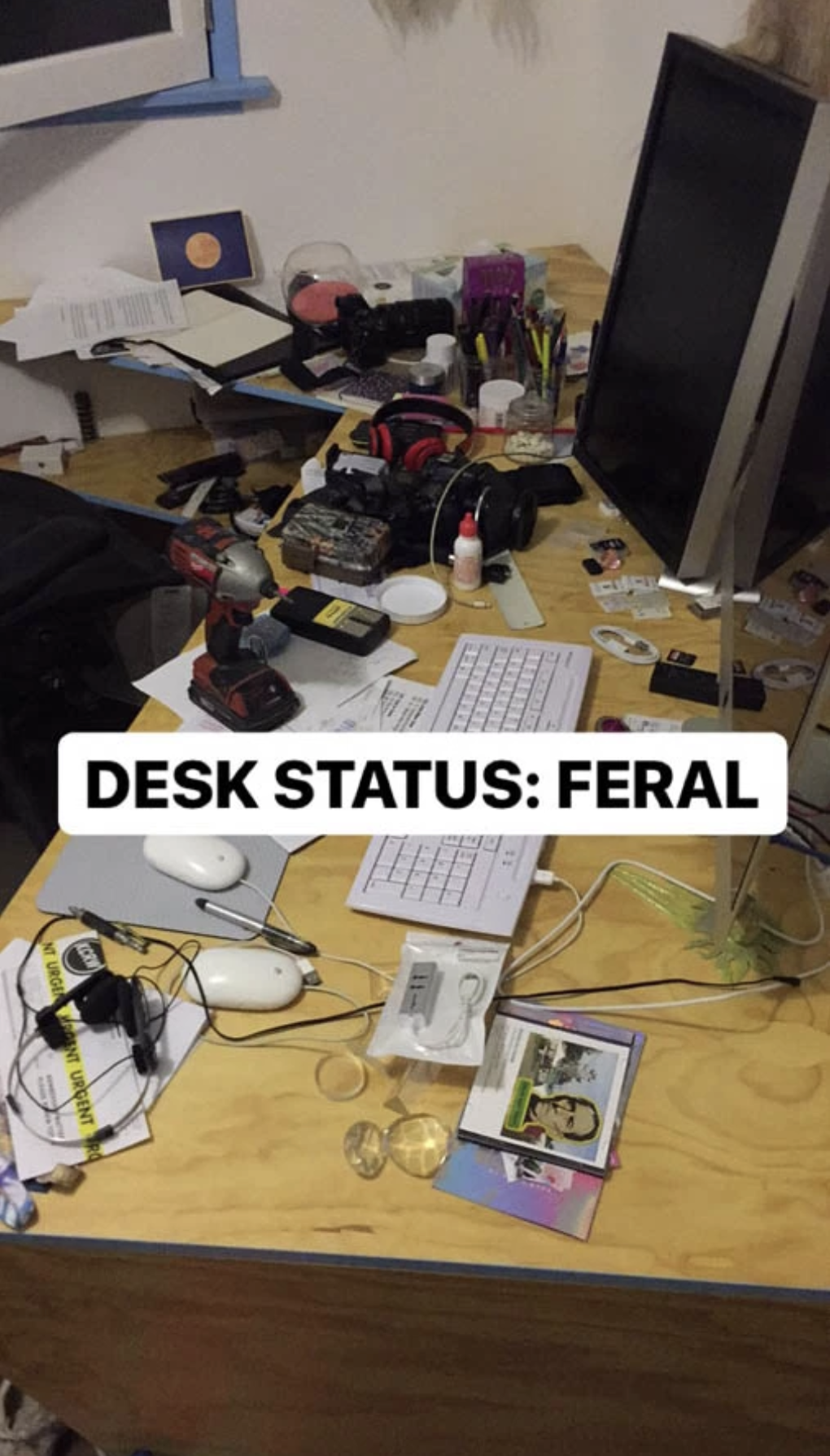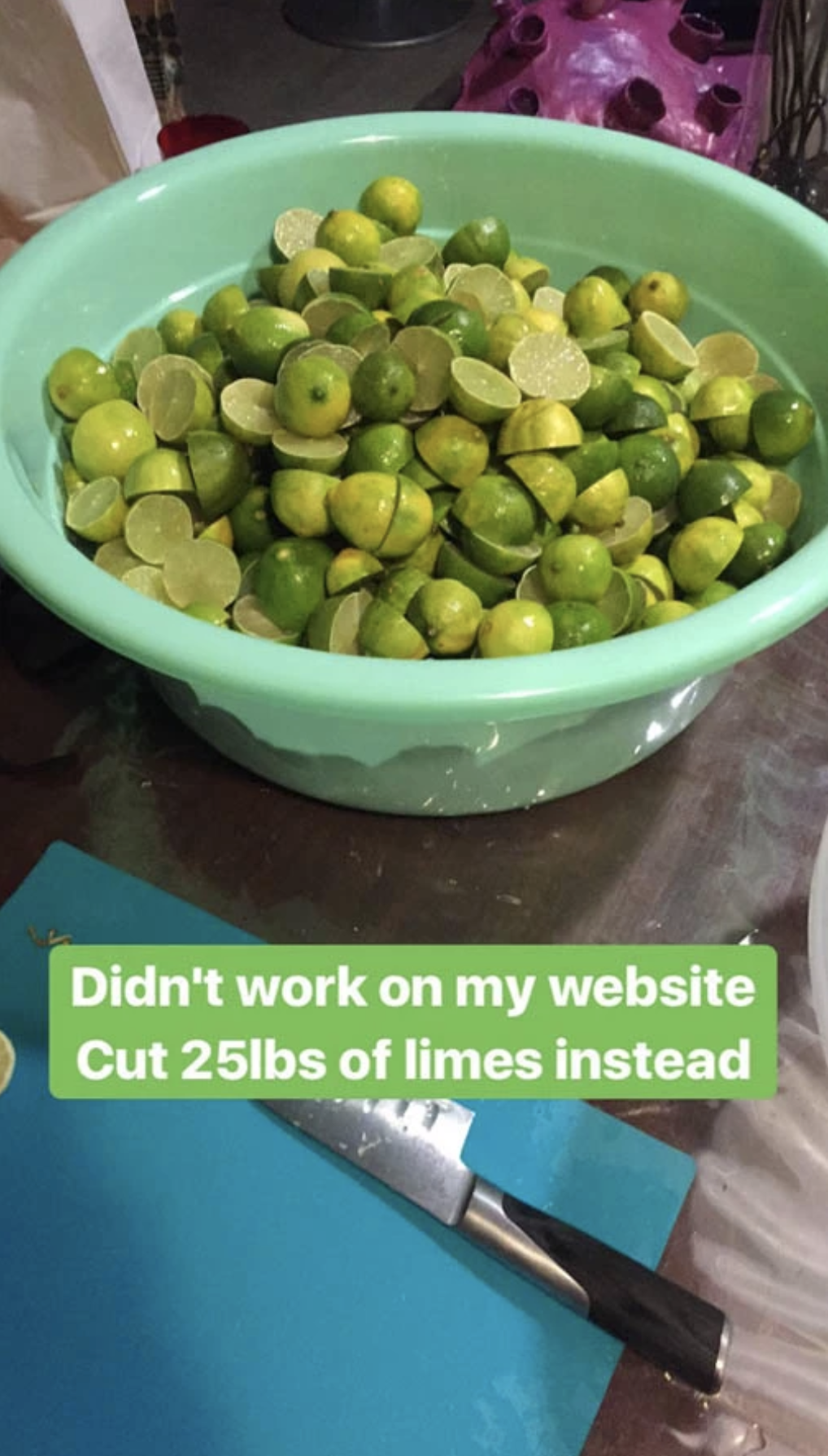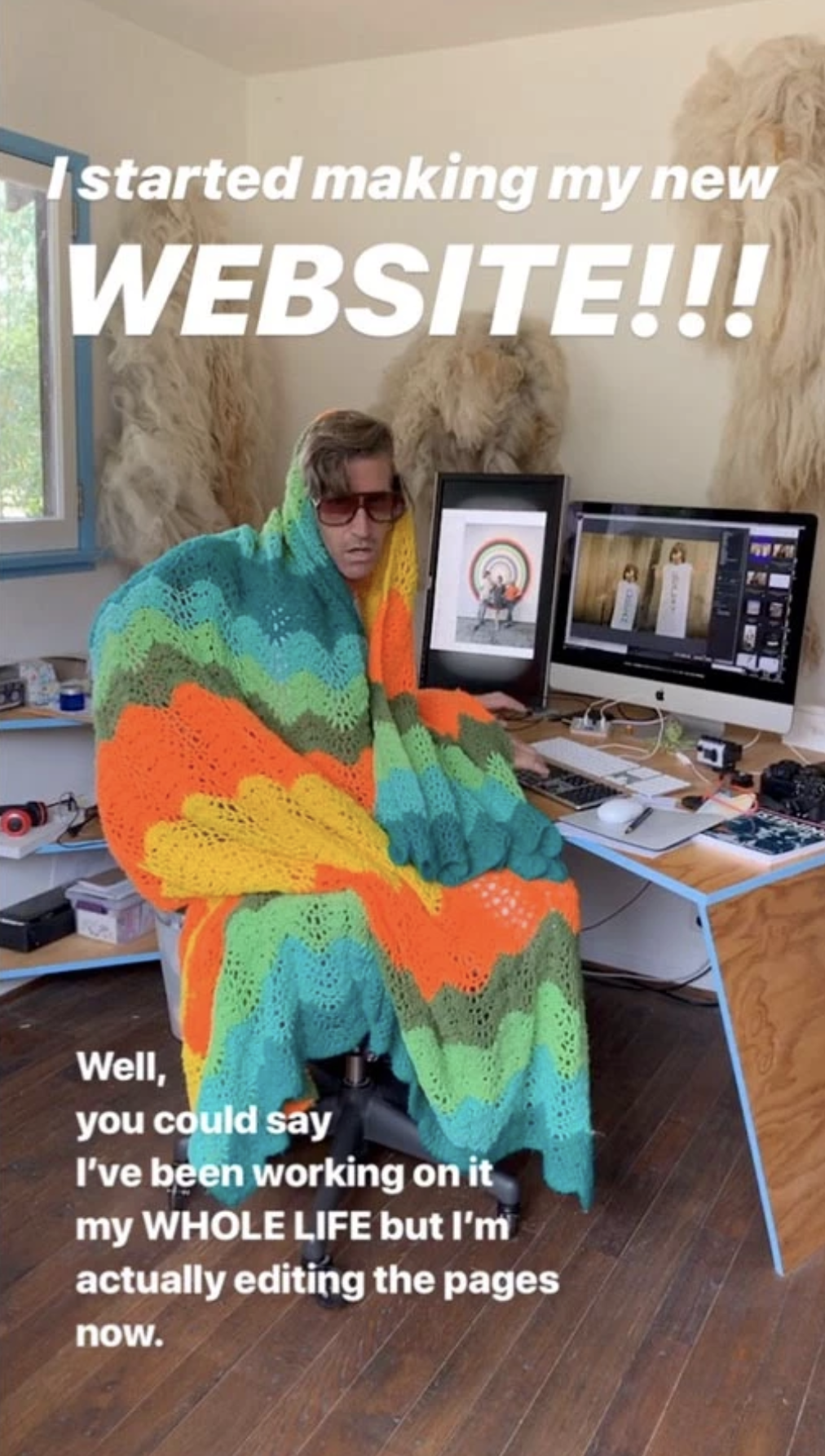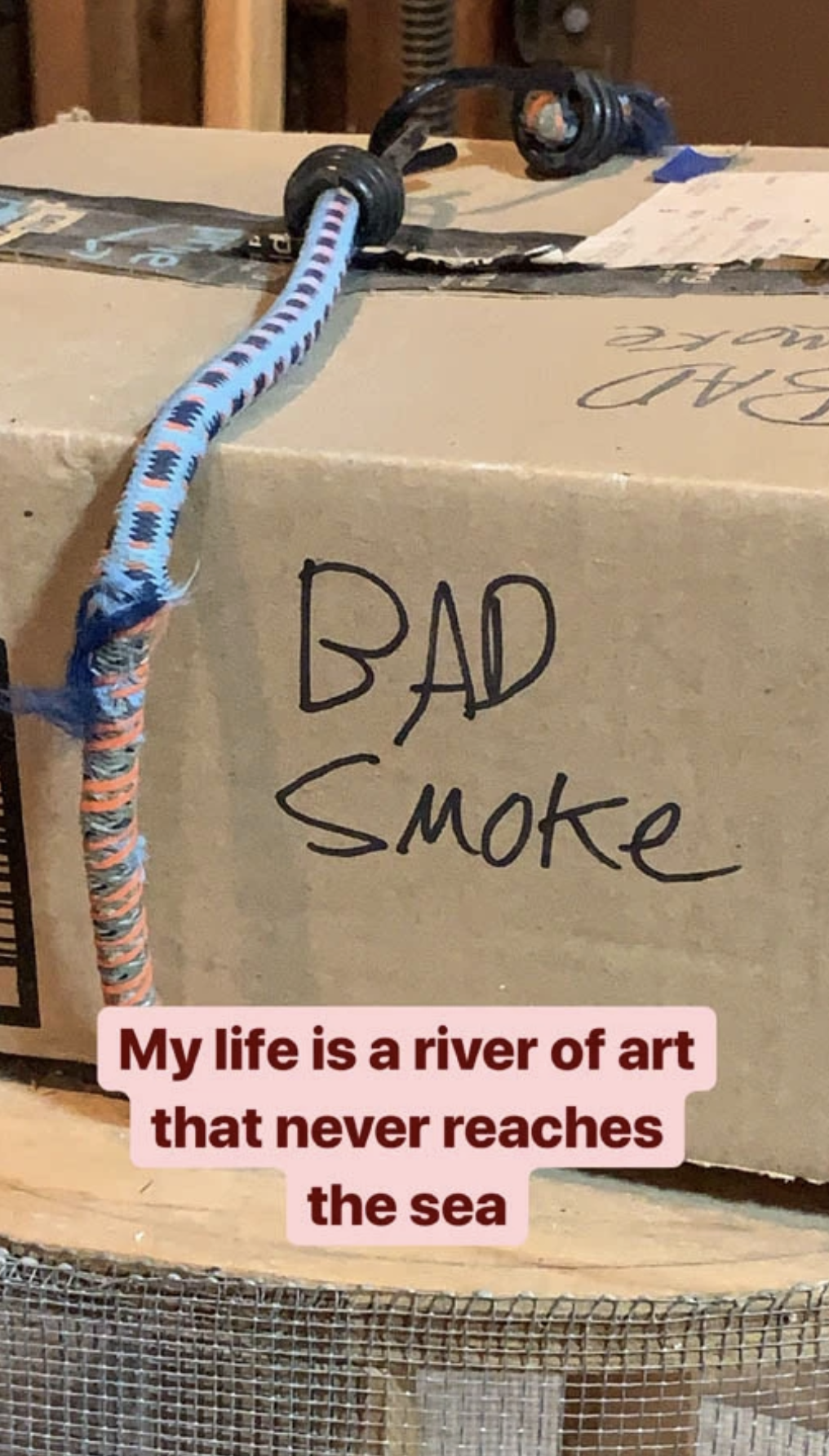A Legend in My Mind
The Digital Outsider Art of Joel Fox
Written by Cassandra C. Jones | Photos provided by the ArtistWhen I was in art grad school in the early 2000s, pre iPhone but post cheap pocket digital camera, a professor once advised me that "the most challenging medium you can choose in the art world is photography."
"Because," he said, "photos are being taken at every moment, in every location, by almost everyone. The competition is staggering."
Fast-forward twenty years, not only is the medium of photography at a fever pitch, but so is almost every form of art in existence. And maybe it was always like that. But for most of history, we did not have an open window into every artist who was willing to maintain an online presence. Before Instagram took the Art world for a loop and fundamentally changed it forever, one would have to go to an art venue, buy or borrow a book, or be invited by a collector to see anything worth seeing, or so we thought. We now know better.
In the past, most artists needed to be vetted by a vetter of Art (gallerist, curator, museum director, etc.) to grace the narrow isles of art history. These days it's just as viable a career path to find fame by accumulating "likes" or buying them, whatever the case may be. Either way, it is clear that a cultural shift of power has occurred, and the playing field is incredibly dense. As I skim past hundreds of posts by contemporary artists before bedtime, I marvel at all the smart and provocative acts of creativity that I now get to see in the convenience of pajamas and a down comforter. But the fast-moving train of posts sometimes blurs together. I often space out while scrolling, and I forget to "like" things. Then I feel bad because I know art is being made that deserves more than a quarter second of my time. Of course, galleries and museums are alive and well, and I can see and experience art in physical form on a whim. However, I know there is compelling work out there that might never grace those white-walled spaces simply because of the digital culture in which it originated.
One series comes to mind by a prolific digital outsider artist named Joel Fox. Living on a rural property on the outskirts of Ojai, where he houses unusual pets, like emu and alpaca, Fox produces copious amounts of digital content.
PECKY THE EMU
ALPACA VISION
In tandem with his art-making, brands like Vans and Levi's hire Fox and his partner Jennifer Jordan Day under their studio name Smile Mountain when they want a commercial or video spot that is boldly and sincerely eclectic. He also dabbles in NFTs, but only a handful of his videos have made it to that marketplace.
I have followed his work for years and have often wondered and have asked him on multiple occasions, "why don't you have a gallery show?" And I have gotten a lot of answers back, none of them satisfying. But if I had to synthesize my understanding of his position, it would be that he is making too much work to have a show. If he was creating art back in the 1970s, when gallerists coddled their artists and took care of any of their business that was not the business of making art, things might be different. But in this day and age, you have to be a savvy maker, self-promoter, negotiator, and juggler to have a sliver of what those artists had back then. Again, "the competition is staggering." But what I find interesting about his practice is that the constant production genuinely outweighs showing.
On his website, which he never finished and thought he deleted, there is a menu option: Website Story.
Quick! Go look at it now before he takes it down and replaces it with something else!!
Here, Fox has somehow made not presenting his art an art project while simultaneously showing off many strange scenes that look like works in progress or finished Art. But they are never confirmed as such. It will not only make you feel better about your own personal reasons for procrastination, especially if you are an artist struggling to maintain your own website, it will also make you giggle.
Anyone who knows and appreciates Fox's work, and the levity they gain from it, will tell you that they would enjoy laying eyes on everything he makes, intentional art project or not. Still, because he is so prolific in his production, a portion of the gold he spins gets buried (on his bank of hard drives) before more than a select few ever get the chance to see it.
Seven years ago, he casually showed me a series of photos that blew me away. Sometimes I find myself talking about them at parties and scrolling deep into his Instagram to find the one image from the shoot he posted in 2015, so I can offer up a visual. Over the years, I have also asked him on occasion to bring them up on his computer so that I can see them again. Somehow, the images got stuck in my mind, the same way any number of legendary pieces get in there, by witnessing them repeatedly. The difference is that I might be the only one who ever saw the complete series and was passionate enough to nag him about it.
Spiders show up a lot in nature photography, but it is rare to see anyone expand on them.
Black Widows thrive in warm climates, and Ojai is a perfect home for the venomous spider. Most locals can quickly identify their webs; messy and irregular, low to the ground, and made of strong taught threads that snap when you run into them. Also, when you see one, your heart skips a beat, and for a good reason. Being bitten by the infamous arachnid with the red hourglass on its stomach will make your eyes swell shut, your airways tighten, and warrant a trip to the ER, hoping you won't die. We all know someone who has made that journey and heard stories of the severe pain that lingers for days, if not weeks.
Instead of destroying the webs or dusting them with insecticides as most people do, Fox went out to his studio late at night and spray painted them in neon colors, blue, pink, green, and yellow. He then illuminated the webs and photographed them against various nighttime backgrounds; an open door, exposed studs, a dusty floor, and random studio rubble.
The first of these images that I saw did not compute right away. The color, lines, and lightning intrigued me, and it was strange and alluring. However, it did not look like a small act of nature and a little paint, but more like a large-scale sculpture lit with gel-covered theatre lights. After staring for a moment at the glowing center, trying to figure it out, I noticed an outlet on one edge of the frame, in the darkness, massive compared to the structure in bright focus.
On the other side of the photograph, I realized I was looking at the leg of an old red folding chair. And then it made sense that this was not a manmade fabrication but a collaboration between a bunch of deadly creepy crawlies and one daring artist.
I also noticed that the web was wildly intriguing, highlighted by all the neon colors. As it turns out, the architecture of a black widow's web is not irregular at all. It is carefully composed of three functioning levels. The top part of the web construction is its supporting threads, much like scaffolding. The middle zone is a framework of tangled threads for catching fly-bys. And the lower portion is an array of vertical trap threads for snagging walking insects. A female's web is also one of the strongest known substances in nature. But even without that information, which I went off and Googled later, Fox's photographs turned my fear into fascination.
Isn't that one of the most invaluable functions of art, to shift your perspective? Like a magic trick, Fox took this thing that I had seen in one way for most of my life and cast it in a new light. Of course, I'm still mindful of black widows, and I do whatever is necessary to keep them out of the garage and away from my young children. But now, at least, they are more than one-dimensional.
Joel Fox will likely never print and frame his web photos for display, even if I begged him. He is too busy making more treasures for his treasure trove. Maybe, if I am lucky, he might sell me an NFT that I can hang over my digital couch in the Metaverse someday. But only if my kids can teach me how to access the virtual reality universe, and it's not too existentially disturbing. In the meantime, I am content that I got to give this work more than a quarter second of my time and that this series can exist someplace where the number of "likes" it accumulates does not define its worth.
Want more smiles?
Here’s more from Smile Mountain
(WE’RE BIG FANS)



